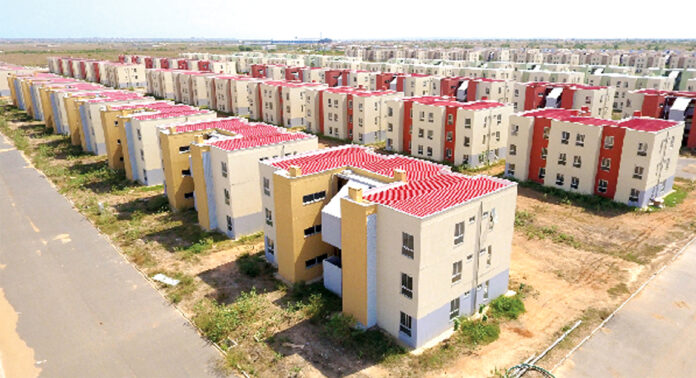Rev Stephen Yaw Osei, Acting Chief Director of the Ministry of Works and Housing, has asserted that 1,502 housing units constructed under the Saglemi housing project are not fit for human habitation.
Meanwhile, the US$200 million loan facility secured for the entire project, covering 5,000 housing units had been utilised on 1,502 housing units, yet only 700 of the housing units under the project were completed.
According to him, the housing project was to occupy over 2,000 acres of land and would be provided in four phases of 1,250 housing units each.
Appearing as the First Prosecution Witness (PW1) in the trial of former Minister of the sector, Collins Dauda and others, Rev. Osei added that it was wrong to reduce 5,000 housing units to 1,502.
Thaddeus Sorry, lead Counsel for Mr Dauda, handed over to the witness, Exhibit K, amendment of the contract, to indicate that there was nowhere captured in the document that the number of housing units has been reduced.
PW1 told the High Court, presided over by Justice Dr Ernest Owusu-Dapaa, that the document in question was null and void, because it did not receive parliamentary approval.
He explained to the court that the document cannot be read in isolation, therefore, needed other complementary documents to give it full meaning.
However, when Counsel stated that the document in reference is page 3 of Exhibit K, he answered that the document is invalid.
The witness said the original agreement is Exhibit H, that stated that the US$200 million loan facility was for the provision of 5,000 housing units, but could not indicate in the document, when previously asked, to prove where his claim was captured in the contract.
Nevertheless, Counsel said Exhibit K describes the number of housing units to be provided in each phase of the project and not the entire project.
The Counsel continued that the document describes the various types of housing units from single, double to three bedrooms.
Mr Sory further argued that the US$200 million was the initial cost of the project and does not result in the reduction of the number of housing units to be constructed.
Since Rev. Osei testified that the contractor was paid after raising certificates, the Counsel tendered through him, Exhibit 1D3, which is a monthly report of the project Consultant, AESL.
The Witness said he had never seen the document before and that it was the first time of seeing it and, therefore, could not speak to it.
The document was contained on a flash drive when disclosed to the defence and was printed by Counsel for Mr Dauda.
On page 12 of the document, a request of US$27, 789,981.73 was to be released to the Contractor, but the witness said such letter would be written after the internal processes have been completed.
His answer was followed by a question: “So far as Exhibit is concerned, the only internal process that is required to ensure payment is the action of the Spending Officer. I’m putting it to you?”
The witness answered: The Spending Officer could have done so if the minister had referred it.
Q: Regardless of Exhibit T, the final cause of payment is the Spending Officer cause to pay?
A. It is not true.
Q. As the Spending Officer of the ministry, is it possible for any expenses out of the ministry’s coffers without the instruction of Spending Officer?
A. The Spending Officer has a threshold, anything beyond that, the minister has to authorise such payment.









